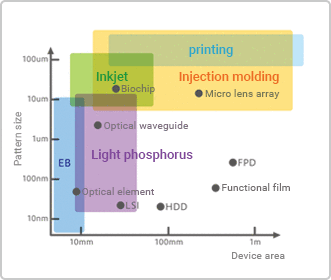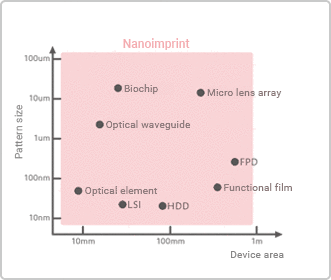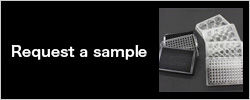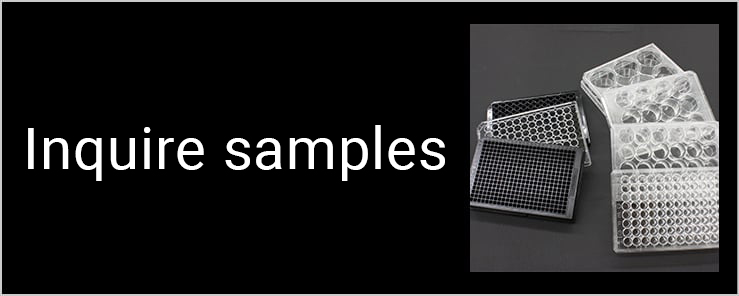UV nanoimprint
What is nanoimprint
Nanoimprinting (NIL) is a fine structure processing technologies that transfers a nanometer-order pattern by sandwiching a resin between a mold and a substrate. The nanoimprinting (NIL) process consists of four components: (1) coating, (2) pressing, (3) transfer (UV light or heat), and (4) release, and is a very simple process for nanosize printing. Since the equipment is simple and high throughput is expected to be achieved, it is expected as a fine processing technologies that can be mass-produced at low cost. In various fields such as semiconductor devices, storage media, biotechnologies, and optical components, working on efforts are being made for practical applications.

Technical advantages of UV nanoimprint
Comparison with conventional technologies
It is the biggest feature of nanoimprint (NIL) that can process large areas where are difficult with other fine structure processing technologies. The range of applicable processing dimensions and area is very wide, so it can be used for a wide range of applications. Processing accuracy is also very good, showing resolution that surpasses semiconductor lithography.
 With the conventional technologies, there is a trade-off relationship between the minimum processing size and the processing area.
With the conventional technologies, there is a trade-off relationship between the minimum processing size and the processing area. Nanoimprint (NIL), which is based on molding technologies, supports a wide range of processing dimensions and processing areas.
Nanoimprint (NIL), which is based on molding technologies, supports a wide range of processing dimensions and processing areas.
Comparison with thermal nanoimprint
There are two main types of nanoimprinting: thermal and optical (UV ultraviolet). Above all, UV nanoimprint (UV-NIL) is overwhelmingly superior in terms of transferability and process speed. Since it uses a photo-curable resin that can be instantaneously cured at room temperature and there is no heating and pressing steps, it enables high-speed processes without the pattern deformation.
| Transfer method | Thermal method | UV method |
|---|---|---|
| Resolution | <10nm | <10nm |
| Process temperature | ×(>100℃) | ○(room temperature) |
| Process pressure | ×(10MPa) | ○(0.1MPa) |
| Transferability | △ | ○ |
| Alignment | △ | ○ |
| Material flexibility | ○ | △ |



